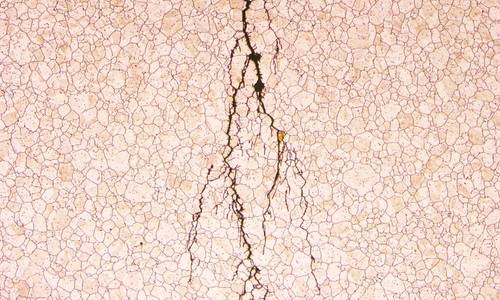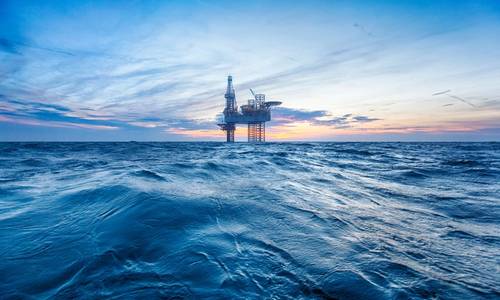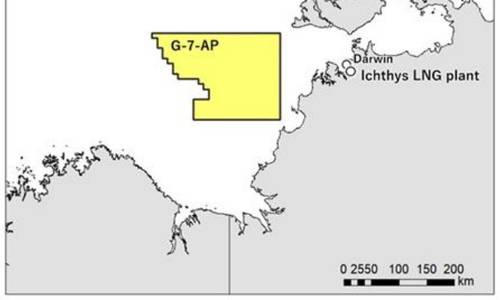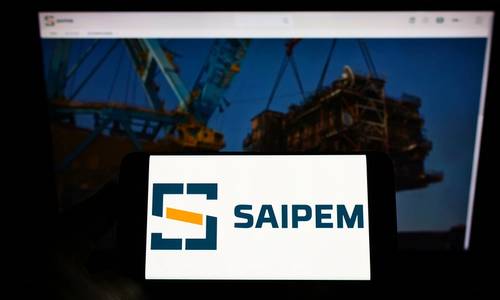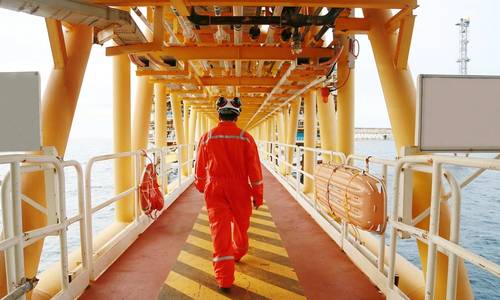Mitigate SCC & HE to Keep Offshore Metal Structures Ship Shape
Greg Trauthwein
April 17, 2025

Understanding, finding and deploying strategies to mitigate stress corrosion cracking (SCC) and hydrogen embrittlement (HE) are essential to protecting investments in offshore structures. Paula Lepore, Global Projects Engineering Manager and Anshul Godha, Materials Scientist at Parker Hannifin discuss a new approach to understanding the potential problem and devising a solution.
Offshore structures face numerous challenges in harsh marine environments, with stress corrosion cracking (SCC) and hydrogen embrittlement (HE) being among the most significant threats to structural integrity and longevity. These conditions can lead to sudden and catastrophic failures, jeopardizing safety and incurring substantial costs. Offshore Engineer recently sat down with Paula Lepore, Chief Engineer at Parker Hannifin’s Instrumentation Products Division, and Anshul Godha, Material Scientist at Parker Hannifin, to discuss the latest approaches to understanding and mitigating SCC and HE.
The SCC and HE Threat
Stress corrosion cracking is a form of environmentally assisted cracking that occurs when a material under high stress is exposed to a corrosive environment. SCC can cause brittle fractures in otherwise ductile materials, particularly in offshore infrastructure such as pipelines and pressure vessels. Hydrogen embrittlement, on the other hand, results from hydrogen atoms diffusing into metals, reducing their ductility and leading to sudden failure. In offshore settings, where structures are exposed to stress and corrosive marine conditions, even minor cracks can propagate rapidly, risking both safety and operational continuity.
"Together, SCC and HE represent significant threats to offshore structures," Godha explained. "These phenomena can initiate cracks earlier than expected and cause rapid propagation, compromising structural integrity and requiring costly repairs." "Periodic sampling and testing are also crucial in identifying issues early in the field."
"Periodic sampling and testing are also crucial in identifying issues early in the field."
Paula Lepore, Chief Engineer at Parker Hannifin’s Instrumentation Products Division, Parker Hannifin
Monitoring and Testing Techniques
Detecting SCC and HE early is essential for preventing long-term damage. While visual inspection is the most straightforward method, it is often insufficient, particularly for subsea structures or hard-to-reach areas. Advanced non-destructive testing (NDT) methods, such as ultrasonic testing, magnetic particle inspection, and dye penetrant testing, are more effective. Additionally, electrochemical techniques can assess material susceptibility to corrosion, while standardized chemical testing, like ASTM G123 and G38, help evaluate different alloy grades.
"A combination of monitoring and testing methods often provides the most comprehensive assessment," Lepore noted. "Periodic sampling and testing are also crucial in identifying issues early in the field."
Proactive Mitigation Strategies
When it comes to mitigating the effects of SCC and HE, prevention from the outset is paramount. This means selecting the right materials during the design phase—preferably alloys that can withstand the harshest environments. Additionally, minimizing stress through appropriate design practices, such as avoiding sharp corners, using stress relief annealing, and ensuring proper welding, is essential.
Cathodic protection, a technique to reduce metal corrosion electrochemically, is also vital. Keeping water from stagnating and allowing proper drainage can prevent localized corrosion. Having redundant systems in place as a safeguard against unexpected failures is equally important. "Together, SCC and HE represent significant threats to offshore structures. These phenomena can initiate cracks earlier than expected and cause rapid propagation, compromising structural integrity and requiring costly repairs."
"Together, SCC and HE represent significant threats to offshore structures. These phenomena can initiate cracks earlier than expected and cause rapid propagation, compromising structural integrity and requiring costly repairs."
Anshul Godha, Material Scientist, Parker Hannifin
Real-World Challenges and Solutions
One practical example shared by Godha involved chemical injection skids used in the oil and gas industry, where components are exposed to extreme pressures (up to 15,000 PSI) and corrosive environments. Traditionally made from coiled stainless steel, these components are prone to SCC under high stress and chloride-rich conditions. Such scenarios illustrate the importance of understanding material behavior under real-world conditions, beyond lab testing.
In the power generation sector, highly stressed alloys exposed to atomic hydrogen can suffer rapid embrittlement, leading to catastrophic failures. Managing these risks requires a nuanced understanding of both material properties and environmental factors.
The Future of Mitigation: Innovations on the Horizon
Looking ahead, advanced material development is leading the charge in combating SCC and HE. High-performance stainless steels and nickel-based alloys are being designed to resist both phenomena, offering potential breakthroughs in offshore applications. Additionally, digital technologies such as AI, machine learning, and digital twin simulations are enabling engineers to predict and manage stress conditions proactively.
Real-time monitoring systems using advanced sensors are also becoming more prevalent, offering early detection and predictive maintenance opportunities. One promising development from Parker-Hannifin is the SuperShield technology, which significantly improves corrosion resistance while maintaining compatibility with traditional materials.
Mitigating SCC and HE requires a multifaceted approach, combining material selection, stress management, environmental control, and continuous monitoring. As offshore operations continue to push the limits of engineering, integrating new technologies and practices will be crucial to safeguarding structural integrity and minimizing downtime.
"Understanding the problem from the start and applying preventive measures is far more cost-effective than dealing with failures later," Godha emphasized.
Watch the brief interview with Paula Lepore and Anschul Godha on Offshore Engineering TV:

